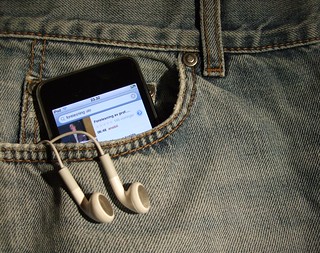by Jose Antonio da Silva
According to an article on Wikipedia, the history of
education if considered as passing down traditions from one generation to
another is probably as old as the history of civilization. However, as
developmental psychologist Peter Gray reviewing the history of education in a
2008 blog post reminds us, the idea of universal education arouse in the 17th
century. It was then that, according to him, learning started being children’s
“work” aided by the expertise of adults. If in the beginning of its history
methods and techniques for teaching were mostly dictated by the adult in a
position of power, as time went by the pendulum shifted to cater more and more
to the needs of learners no matter how old they were. The advent of computer
technology made this relationship even more complex once these machines gave
tremendous power to students and placed higher and higher demands on teachers.
So, the objective of this post is to address some issues related to the
integration of technology into the EFL class.
An EFL teacher who started teaching in the early 90s in an
institution that tried to keep up with the latest technological gadgetry would
probably have at his disposal a slideshow projector, a tape recorder, and a TV
set with a VCR on the corner. By the end of the decade, the only item remaining
would be the TV set, the others would have been replaced by a computer on the
teacher’s table connected to the TV set which still might be connected to a
more modern VCR. Fast forward ten more years and changes in this area are
dramatic. The 21st century has brought with itself a lot of progress in this
field and things have not stopped evolving since then. Computer technology has
miniaturized and thus become ubiquitous and accessible to almost anyone. In
Brazil, according to a National Household Survey (PNAD) study, the number of
Internet users in the country increased by 10 million between 2009 and 2011. As
more and more technology makes its way into students’ lives and the classroom, teachers
have more and more trouble coping with these demands. The solution to this
problem may lie in finding ways to use this same technology not only as a means
of delivering content, but as a way of practicing inside class, and lastly of
extending learning beyond classroom and into students daily lives.
The first issue with such widespread use of computer devices
and connectivity arises with students bringing their portable devices into
class. If such devices are connected to the web, teachers are divided between
asking students to turn their devices off or using them in class for practicing
language and generating content. The argument for banning is reasonable and is
supported by some educators (Yamamoto, 2007). Devices can be a distraction and
really make students lose focus and let a teacher literally talking to the
walls. However, as Nicky Hockly (2012) claims, adopting a BYOD (bring your
device) approach gives students some autonomy and creates a ground for
negotiation between teachers and students. Students can use the photos they
have in their mobile phones to talk about themselves and show to classmates
what matters to them. Alternatively, they can go around school on photo
treasure hunts and do similar activities. The audio capabilities can be used to
record conversations that can be replayed in class or used to assess
pronunciation or other skills.
In contexts that are low tech and students do not carry
fancy mobile devices there is always at least a computer lab. If such facility is
not available, students can be encouraged to use their computers at home. The
idea is to move from a push content mind set to a pull content one, an approach
in which teachers see learners as active participants and producers or content.
So, instead of adopting a closed LMS environment in which educators exert
control and push content to students, a teacher can opt for the so called web
2.0 platforms that allow more freedom and customization, allowing the teacher
to push content from learners. The flipped classroom (Gerstein, 2012) idea
advocates exactly that, using blogs, wikis, podcasts, social networking and
other media to get extended practice and student generated content. Once
teachers connect students and their classes to the web, his initiative allows them
to see themselves as 21st citizens that are no longer just consumers of
content, but as creative and active participants in making their own learning, creating content, and contributing to the learning of others.
References
Gerstein, J. (2012). The Flipped Classroom: The Full Picture. Kindle Edition. Gray, P. (August 2008). A Brief History of Education. Psychology Today. Retrieved from http://www.psychologytoday.com/blog/freedom-learn/200808/brief-history-education
Gerstein, J. (2012). The Flipped Classroom: The Full Picture. Kindle Edition. Gray, P. (August 2008). A Brief History of Education. Psychology Today. Retrieved from http://www.psychologytoday.com/blog/freedom-learn/200808/brief-history-education
Hockly,N.(October 2012). Tech-savvy teaching: BYOD. Modern
English Teacher, volume 21(number 4). Retrieved from
http://www.academia.edu/2065524/Tech-savvy_teaching_BYOD
Yamamoto, K. (January 2008). Banning Laptops in the
Classroom: Is it Worth the Hassles? Journal of Legal Education, Volume 57
(Number 4). Retrieved from
http://papers.ssrn.com/sol3/papers.cfm?abstract_id=1078740


No comments:
Post a Comment
We´d love to hear from you.